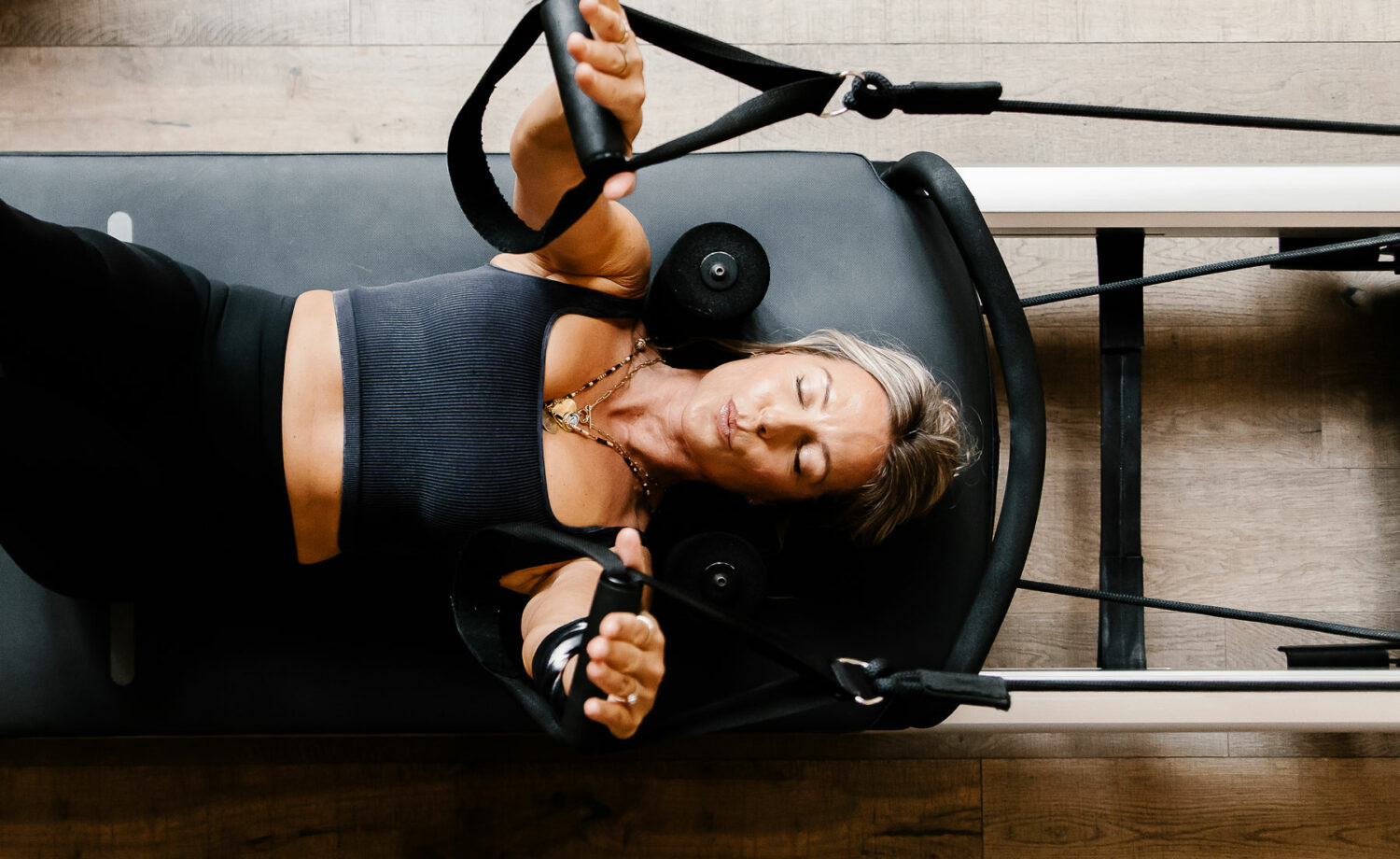A good grip has long been the goal in sport. Tennis champions rely on it for a strong backhand and you’d be lost without it for weightlifting at the gym. But studies are now connecting the dots between having a good grip and our overall health. In fact, according to new research a weak grip has been linked to poor cognitive function, osteoporosis and diabetes. So we’re getting to grips with why it’s so important, from understanding the connection with our health and longevity to the best exercises to improve our grip strength – and yes, Pilates is a strong contender.
So what exactly is grip strength?
Put simply, grip strength refers to how securely and firmly you can hold onto different objects and things, whether that’s during exercise or in your day-to-day life. It’s an indicator of your muscle strength and can be measured in different ways. The most common of which involves using a type of muscle testing equipment called a dynamometer. To use this device, you hold it in your palm and squeeze as hard as you can with your fingers. It is estimated that the average ‘healthy grip strength for men’ is about 72.6 pounds and around 44 pounds for women, however, this will of course differ person to person.
According to Healthline, there are three types of grip strength you can improve. The first is ‘Crush’, which refers to how strong your grip is when using the palm of your hand and fingers.
Others include ‘Support’ pertaining to the length of time with which you can hold onto an object, and ‘Pinch’, which is the firmness with which you can pinch something between your thumb and fingers.
Why is grip strength important?
Handgrip strength actually acts as a general indication for overall health. As Richard Bohannon, a physical therapist told the Guardian, ‘this is because of its relationship with so many other health-related variables, including bone-mineral density, nutrition status, cognitive impairment, sleep problems and quality of life’.
There is a lot of science to back it up too. A 2015 study discovered that a weak handgrip increased the likelihood of a heart attack, cardiovascular disease, and stroke. A 2018 study, meanwhile, found that grip strength was even an accurate gauge of cognitive function. More recently, a 2021 study discovered that grip strength is crucial and in fact ‘irreplaceable’ to indicate a person’s muscle function and strength.
Though experts have said that grip strength is crucial only for older adults, everyone can benefit from improving their grip strength. As per the World Health Organisation, anyone with a sedentary lifestyle or not exercising enough might suffer from poor musculoskeletal function due to a weak grip.
Good grip strength is important for:
- Your overall muscle strength
- Reducing the risk of diseases such as osteoporosis and arthritis
- Reducing the likelihood of falls and fractures
- Bone mineral density
- Health and longevity
Weak grip strength is linked to:
- Poor cognitive function
- Depression and anxiety
- Sleep issues
- Rheumatoid arthritis
- Reduced muscle strength
How to increase your grip strengtH
The good news is that improving your grip strength can be relatively simple. Easy exercises include stretching your wrists and hands by squeezing a tennis ball for 10 seconds, trying a desk press where you position your palms face up under a desk and push up, or working the small muscles in your hands simply by clenching your fists. Then, of course, there are muscle building exercises like Pilates.
What are the best grip strength exercises?
Below, we’ve outlined some of the best exercises to help improve your grip strength.
Push Up
Get into a push up position (lean on your knees for support if required). Position your hands under but slightly outside your shoulders. Lower your body until your chest nearly touches the floor. Slowly raise yourself back up to the original position.
PLANK
Plank is another great wrist strengthener. The primary focus is on alignment of your shoulders over your wrists with your elbows pointed backwards and your fingers pointed forward. Avoid locking your elbows, and maintain a microbend to protect the joint. Press down through your hands and up through your shoulder blades to avoid loading your body weight into your wrists.
Wrist Extension
This is an excellent way to increase your wrist’s tolerance of strain and pressure. Come into all fours and place your hands in line with your shoulders on the mat with your fingertips facing your knees. Gently lean your body back and forth to either reduce or deepen the intensity of the stretch.
Use of hand weights
“When using hand weights, in particular, lighter ones, I often notice people not holding properly onto the weights in their hands,” says Heartcore’s founder, Jessie Blum. “Ensure the grip of your wrist is intentional, connected and strong throughout the move like a lateral raise, bicep curl, tricep kickback or overhead press.”
How does Pilates improve grip strength?
“Grip strength isn’t necessarily on your radar unless you’ve experienced a hand injury in the past or struggle with some sort of weakness in your wrists”, says Jessie. “Since most of our day-to-day work has transitioned to screens, we rarely get to use our wrists naturally anymore. Unlike traditional Pilates, at Heartcore we incorporate the use of hand weights, a weighted Pilates ring, wrist weight bearing exercises like planks as well as loaded spring resistance into all of our workouts to help build stability, mobility and strength in your grip – think hands, fingers and wrists,” she adds.
